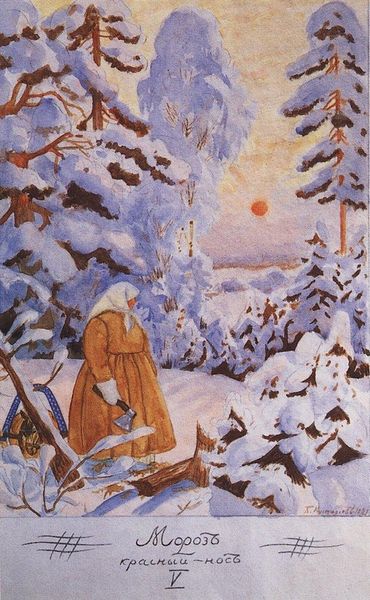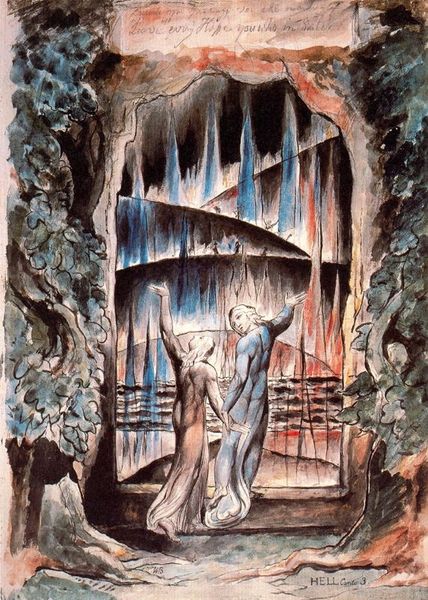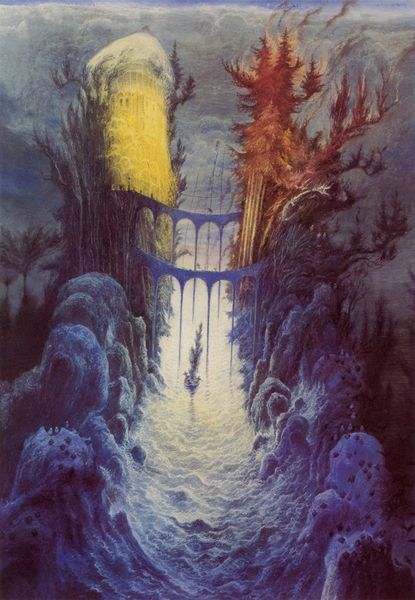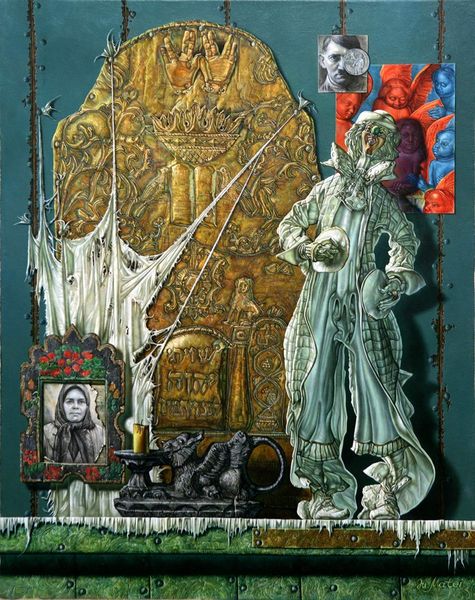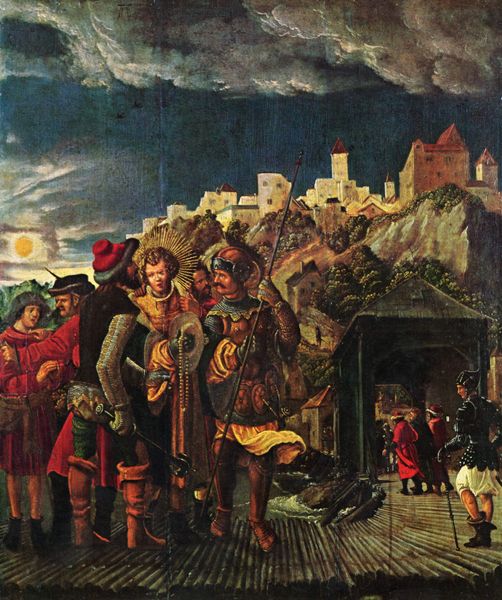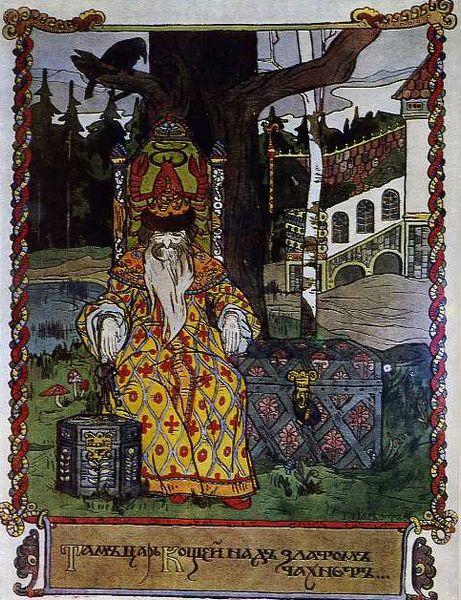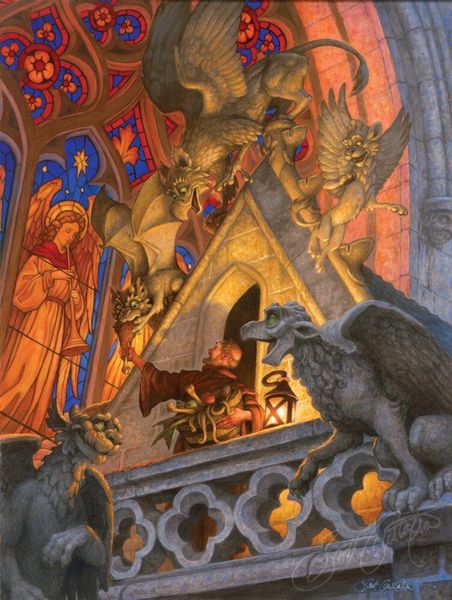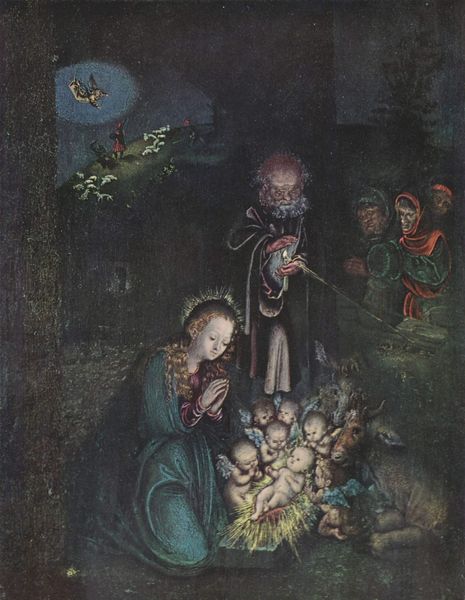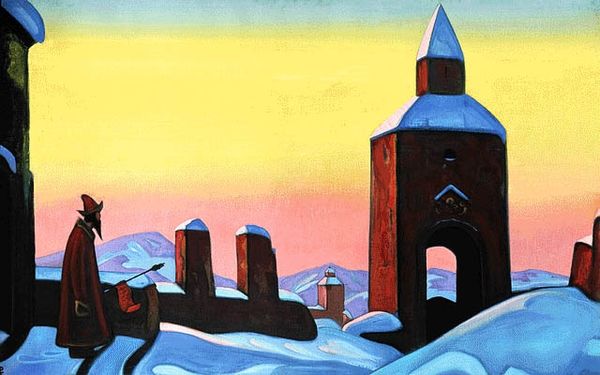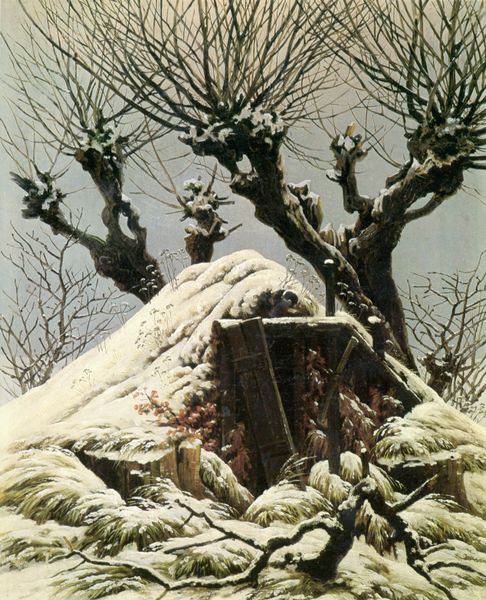
Copyright: Public domain
Editor: Here we have Heorhiy Narbut's "Allegory of 1916 (Chronos)," a watercolor and mixed media piece created in, well, 1916. It definitely has this overwhelming sense of foreboding about it, almost like time itself is crumbling. What’s your take on this, what stands out to you? Curator: Oh, it’s absolutely soaked in dread, isn't it? You’ve got Chronos, or Father Time himself, looming large, scythe in hand, hourglass draining – subtle, right? But look beyond the obvious symbolism. See how Narbut has depicted the architectural ruins? Editor: Yeah, like the broken columns and the crumbling clock towers? Curator: Exactly! They are not merely background elements but potent symbols reflecting the devastation of World War I, raging in 1916. The war wasn’t just about battles; it was an annihilation of an entire era. Editor: So, Chronos isn't just about the passage of time, but maybe the end of a specific time? The death of an era? Curator: Precisely! Narbut wasn't just painting time; he was painting a historical and cultural apocalypse. It's a heavy concept, isn’t it? Considering it through the lens of its creation brings out something so much more visceral than the typical images of war we usually study. What did this unlock for you, thinking about time's relentless march, war, and cultural dissolution all tangled up? Editor: I definitely see it differently now, like it’s not just some distant historical thing. The feeling of something ending… that makes it much more immediate, even today. Curator: Indeed! Perhaps art allows us to reflect more intently on how endings carry both grief and the potential seeds of rebirth, and how images serve memory and maybe can push the boundaries of imagination and empathy.
Comments
No comments
Be the first to comment and join the conversation on the ultimate creative platform.
